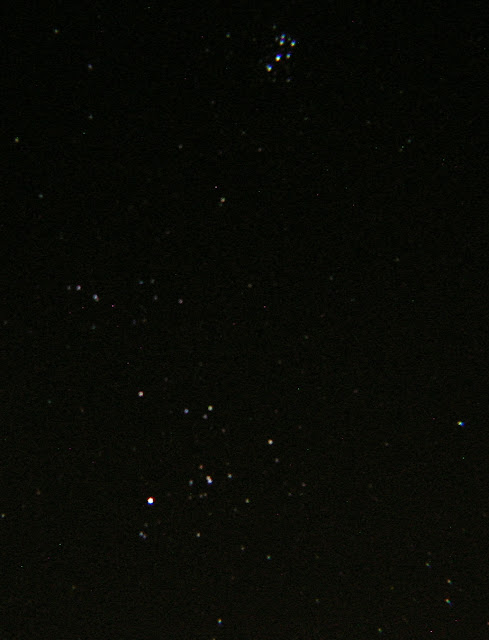“V” may be for Victory, but it’s also the shape of one of the closest star clusters to Earth: the Hyades. Located in the constellation Taurus, finding this star cluster is easy-peasy - the brightest stars in the cluster make a distinctive 'V' or arrowhead shape and it is located south of its more well-known half sisters, the Pleiades, or Seven Sisters. The Hyades are 'only' about 150 light years from our solar syste - the Pleiades, for example, is three times farther or about 400 light years away.

The first star to catch your eye in that V shape will be a bright orange spark to the bottom left - the 'eye' of the Taurean bull. This is the red giant pictured below, Aldebaran - a star that is approximately 50 times the diameter of our Sun. Aldebaran is actually not part of the Hyades star cluster at all. It’s only 65 light years from Earth (that is, almost halfway between us and the Hyades) but coincidentally happens to be in the foreground of our line of sight to the Hyades. That said, without Aldebaran, the cluster would be a little disappointing; so it does adds a little lustre to it and helps anchor the overall shape of the cluster for us astronomers. The name Aldebaran actually comes from Arabic (al-dabaran) and translates literally as "the follower", presumably because this bright star appears to follow the Seven Sisters in the night sky - in which case, perhaps 'Stalker' might have been a better word! For the Seris of northwestern Mexico, Aldebaran is said to provide light for the seven 'women' giving birth. And those Trekkers among you probably know of one of Scotty's favourites, the Aldebaran whiskey and the Aldebaran mud leeches used by the Denobulan Dr Phlox!
The Hyades contains about 20 orange and blue stars that are perhaps visible to the naked eye; If you like double and binary stars, you'll love Hyades - as you can see from the image below, the Hyades cluster has quite a few pairs in it. Even with average eyesight, you can probably make out and split with tree pairs without any difficulty - the Sigmas (just a little to the south pf Aldebaran), the Thethas (to the east) and the Kappas (way up north).
While the cluster appears like the letter “V” from our perspective on Earth, its true shape is approximately spherical. And while we may be able to observe about 20 stars visually, the Hyades actually contains some 300-400 stars. Below is a 'stacked' enhancement of the image above, which clearly show a lot more stars than is evident at first.
All photographs on this page © Sabri Zain 2012.




No comments:
Post a Comment